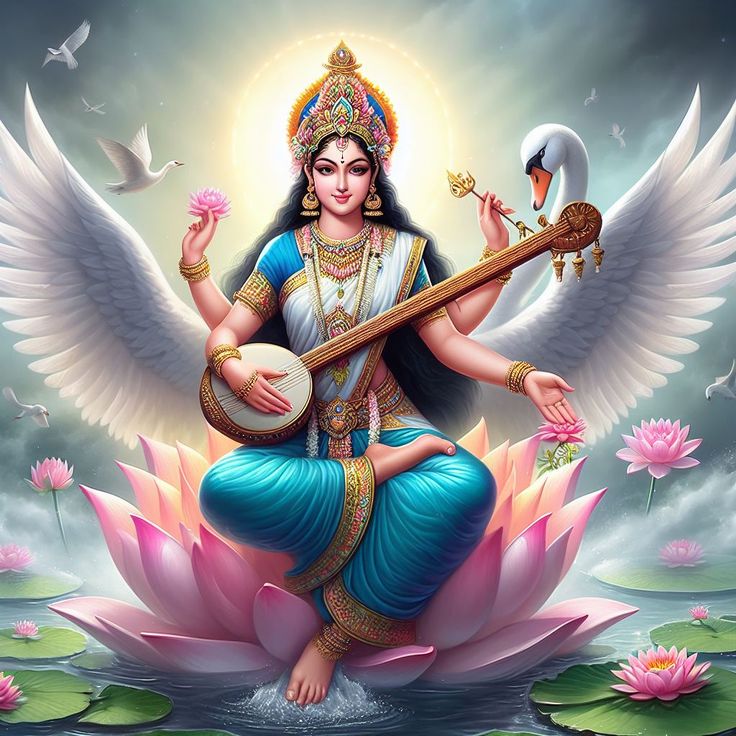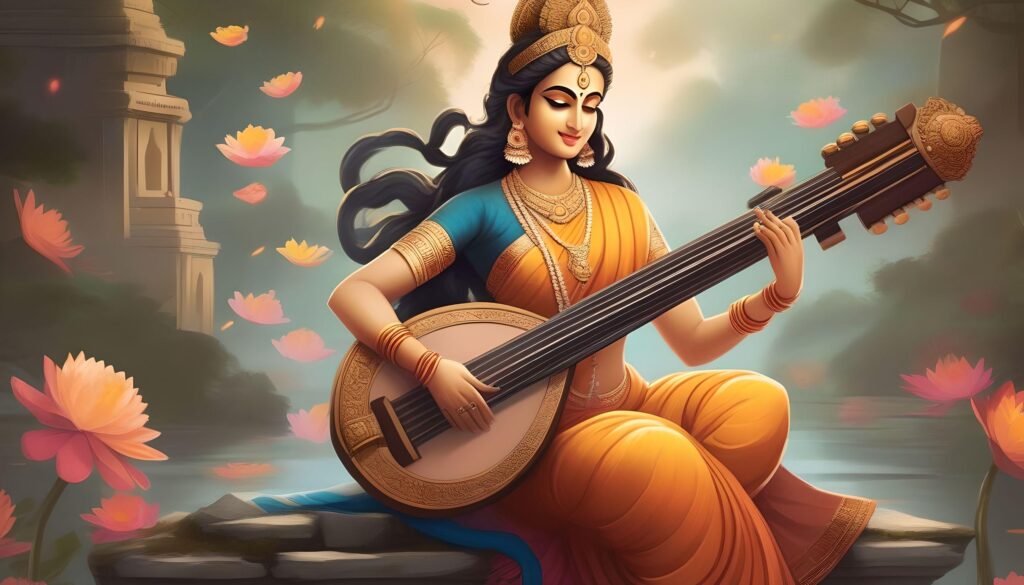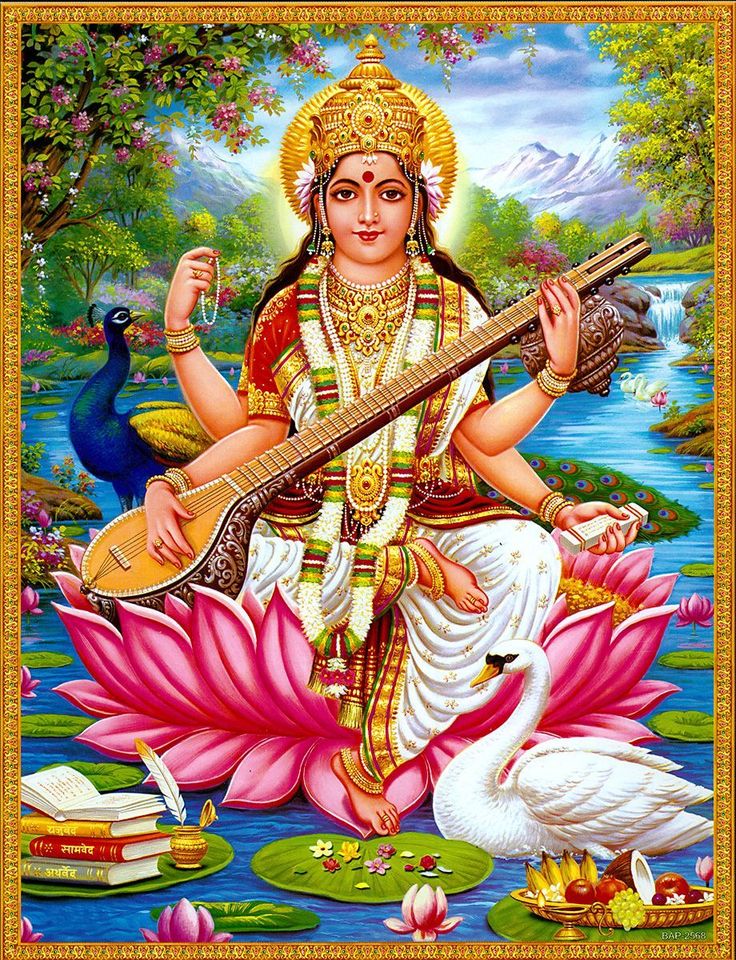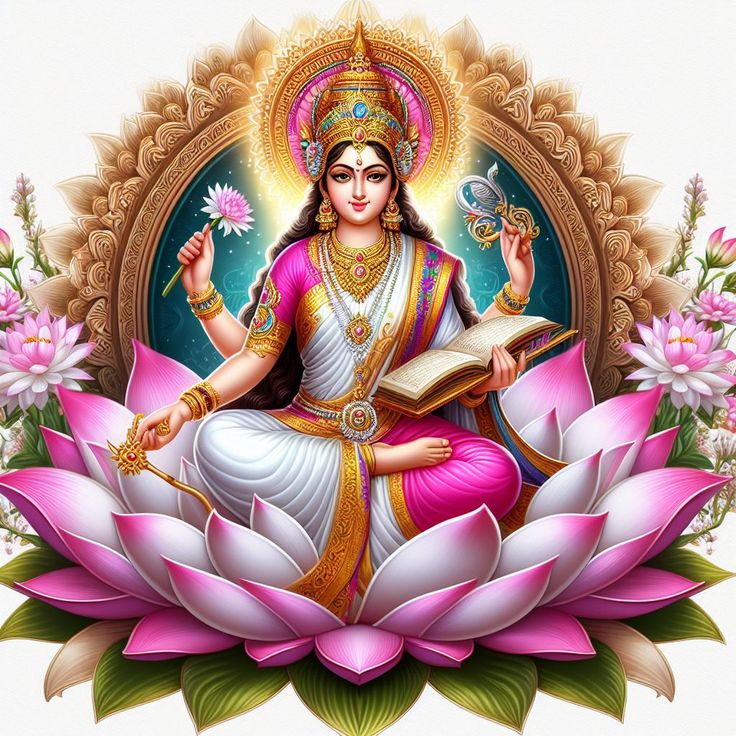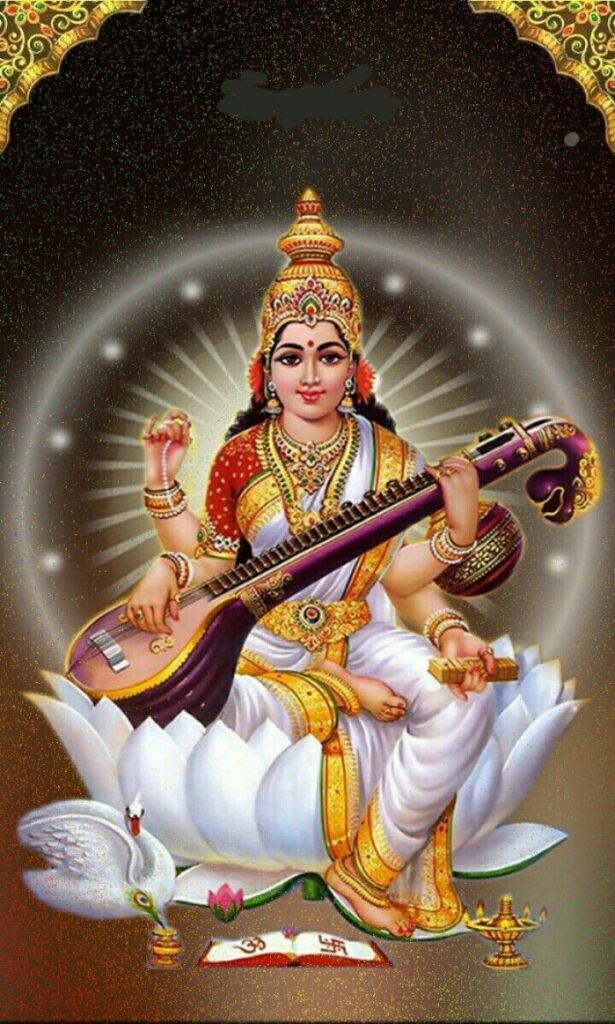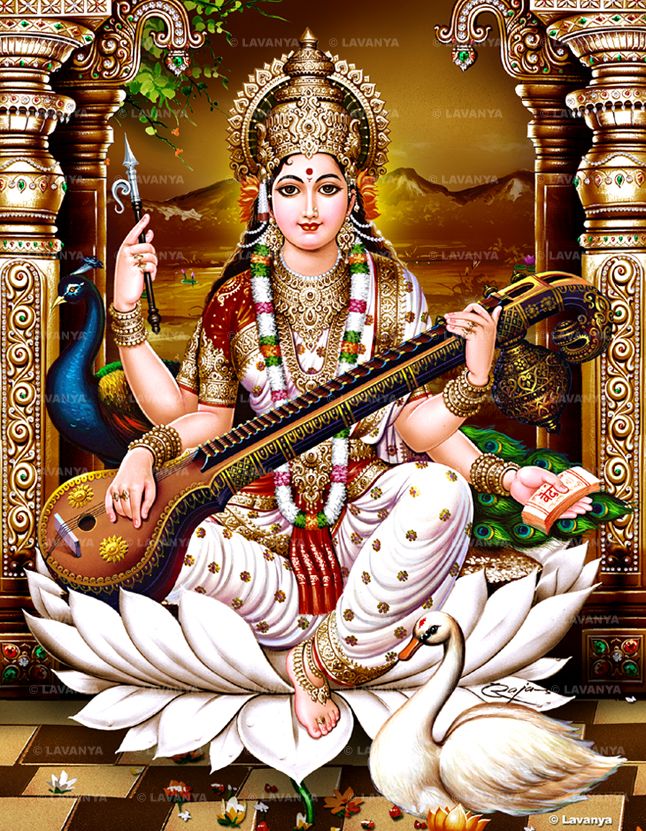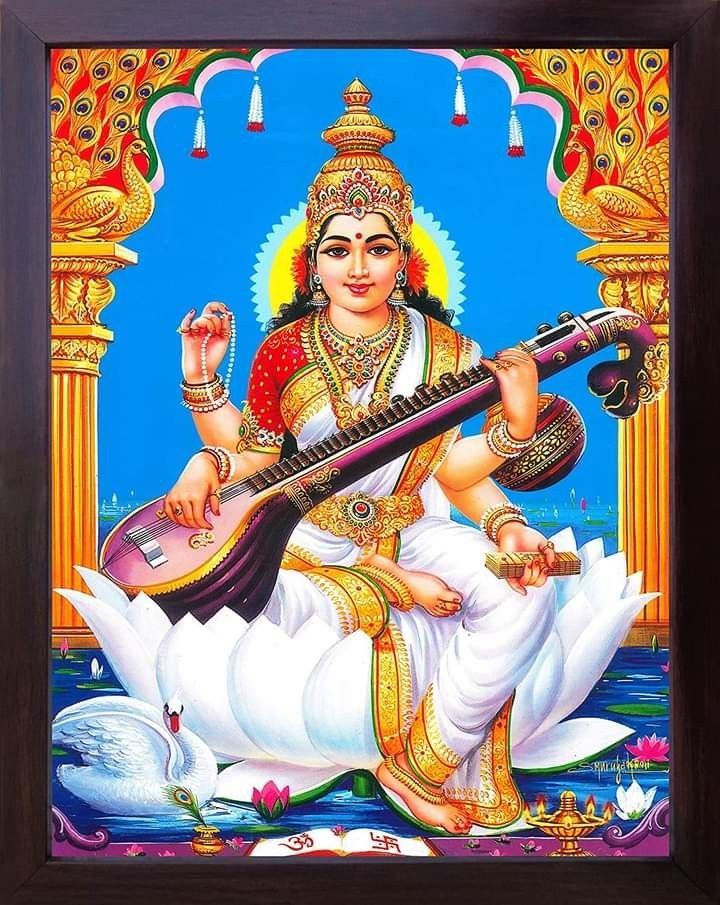Image For Saraswati Maa : Representation in Sculptures and Paintings
introduction
The divine feminine has enthralled Indian art for millennia; none more so than the beloved goddess Saraswati. Saraswati has motivated generations of artists to portray her essence in amazing sculptures and paintings as the living example of wisdom, knowledge, and the arts. From the ancient Vedas to modern times, Saraswati’s image has changed to represent the cultural and spiritual importance she carries in the hearts of the Indian people.
Hindu Mythology and Iconography: Saraswati
Saraswati first emerged from the Vedas and Puranas, where she is said to be the goddess of learning, music, and the arts. Often seated on a lotus or swan, Saraswati is portrayed in these ancient writings as a calm and elegant figure with emblems of intelligence and inventiveness. Her four arms, each hand carrying a symbolic object—a book (representing knowledge), a rosary (representing contemplation), a water pot (representing purification), and a musical instrument—representing the harmony of music and knowledge—show the five different facets of our uniqueness.
The Imagery of Saraswati Significance in Indian Art
In Indian art, Saraswati’s image carries great spiritual and cultural weight. From the lotus she sits upon to the white clothing she wears, every detail of her portrayal has great value. Common in Hindu mythology, the lotus stands for her celestial characteristics and transcendence from earthly needs. Her white clothing stands for knowledge and purity; the swan she is most often connected with stands for grace, sensibility, and the capacity to discriminate truth from lie.
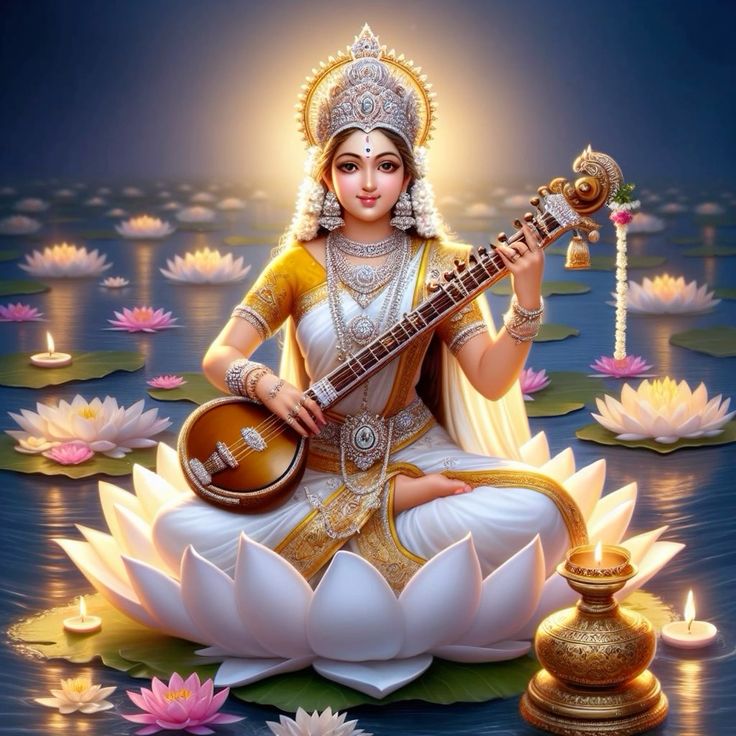
Saraswati Sculptures and Paintings: Development
Over the millennia, Saraswati’s artistic depictions have changed to mirror India’s shifting cultural and creative scene. The first known picture of Saraswati with a palm-leaf book comes from the Mathura area in the early years of the first millennium. Though Saraswati was much praised in literature throughout the Gupta dynasty, her creative depictions were somewhat rare.
Art and science of image-making for worship and temple decorating peaked during the Chalukya, Pallava, Rashtrakuta, and Paramara periods. Although Saraswati representations were not particularly visible in the temples of these times, several remarkable goddess statues were created during the Paramara period under the sponsorship of Raja Bhoja.
Saraswati images proliferated during the Kalyana Chalukyan and Hoysala eras; the goddess was usually shown as free-standing sculptures or in the devakoshtaka, or temple niches. Stunning Saraswati sculptures situated in Brihadeshvara and Gangaikonda Cholapuram demonstrated the artistic ability of the Chola artists.
Saraswati Image Diversity
Indian art’s depictions of Saraswati go beyond a single iconographic form. Although the most common is the classical portrayal of the goddess seated on a lotus, playing the veena, and clutching a book and rosary, various other variants have evolved over time.
Sharada, adored in the area known for its intellectuals and academics, Kashmir, is one of the most honored manifestations of Saraswati. Apart from the usual qualities, the Sharada Saraswati is seen with a unique kirita (crown) and carrying a water pitcher.
Saraswati is also known as Maha Saraswati in the Shakti religion; she is the strong warrior goddess with eight arms who wielders weapons including the trident, ploughshare, and discus. This ferocious side of the goddess is connected with the sustenance of the three worlds and the vanquishment of malevolent forces.
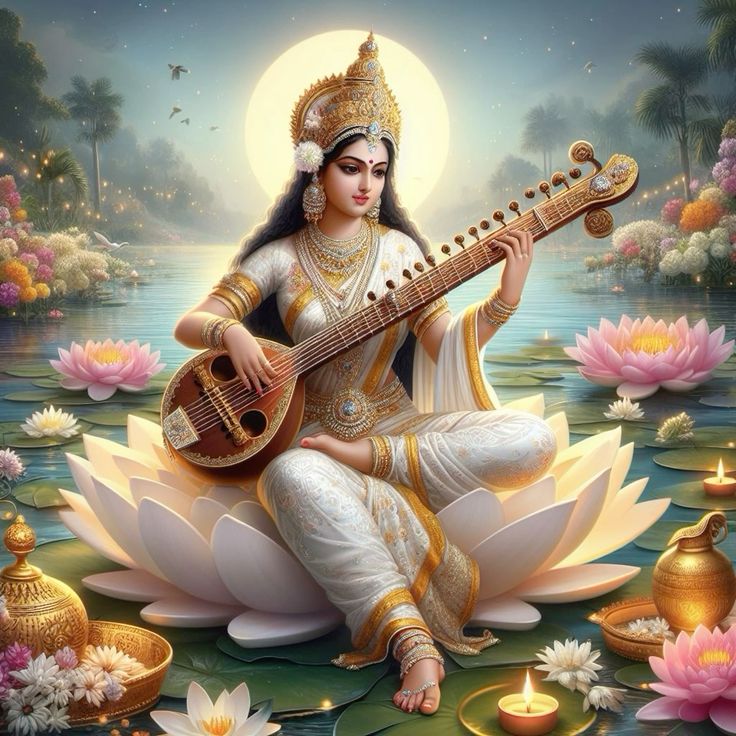
Saraswati in Regional Traditions and Folklife
Although Saraswati’s Vedic picture is the most well-known, the goddess has also been given expression in many regional and traditional art styles. Saraswati is observed in Bengal at the Basant Panchami celebration with white sarees adornment of clay images of the goddess.
Saraswati has equivalents in the Jain and Buddhist traditions in Tara, the goddess of learning in Tibetan Buddhism, and the Shveta (white) and Shyama (blue) Taras, who resemble the Hindu Devi.
Saraswati Imagery’s Continuum of Influence
Saraswati’s visual depictions remain rather important in modern Indian art and culture. While modern artists have investigated creative approaches to represent the goddess, traditional painting schools such the Mysore and Tanjore styles have kept the classic portrayal of her playing the veena.
Saraswati representations are everywhere in homes, businesses, and places of worship, therefore highlighting her ongoing importance as the patron goddess of knowledge, creativity, and the quest of wisdom. People from many backgrounds seek her blessings and find inspiration in Saraswati’s heavenly attributes, therefore transcending religious borders.
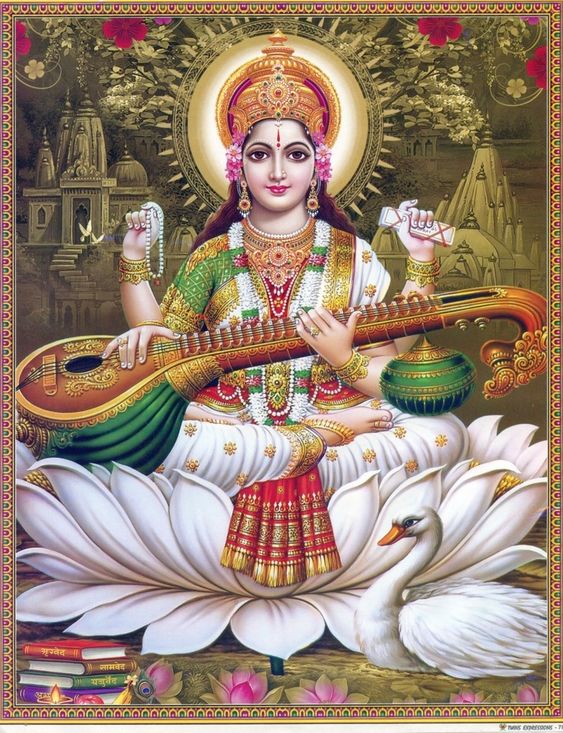
Saraswati and the Spiritual Edge of Indian Art
In Indian art, Saraswati’s image is not only a visual one but also a reflection of the deeper intellectual and spiritual ideas supporting the country’s artistic legacy. Reminding us of the natural deity inside the human experience, the goddess epitomizes the harmonic blending of knowledge, imagination, and the arts.
By means of Saraswati’s artistic representations, Indian art has constantly aimed to transform the ordinary to the magnificent, the material to the transcendent. The goddess’s sculptures and paintings invite the observer to start a road of self-discovery and illumination, therefore opening doors to a higher consciousness.
Saraswati’s Relevance and Global Influence
Saraswati’s striking images have captivated academics and art lovers all over, outside of India. By means of her universal message of wisdom, creativity, and the quest of knowledge, the goddess has promoted cross-cultural conversation and understanding so bridging linguistic, cultural, and philosophical gaps.
The ageless lessons and beautiful depictions of Saraswati provide a potent counterpoint to the fragmentation and discord sometimes afflicting modern cultures experience as the globe struggles with the difficulties of the 21st century. Her ongoing legacy reminds us of the transforming potential of knowledge, the beauty of the creative spirit, and the continuing significance of Indian art and culture.
Conclusion
The artistic depictions of Saraswati in Indian paintings and sculptures attest to the goddess’s ongoing importance in the spiritual and cultural terrain of the country. From the ancient Vedas to modern times, the picture of Saraswati has changed to reflect the evolving artistic tastes and the constant respect for the goddess of wisdom and the arts.
Examining the complex tapestry of Saraswati’s creative representations invites us to go into the deeper layers of meaning and symbolism supporting these amazing pieces of art. Remind us of the transforming power of knowledge, creativity, and the search of the divine by the goddess’s iconography, which not only stimulates the senses but also feeds the spirit.
In the always changing terrain of Indian art, Saraswati’s legacy shines brilliantly, motivating academics, artists, and followers both to pursue the road of enlightenment and to honor the infinite possibilities of the human spirit.
#saraswati #image #photo #pic #artwork #saraswatiimage #goddesssaraswati
